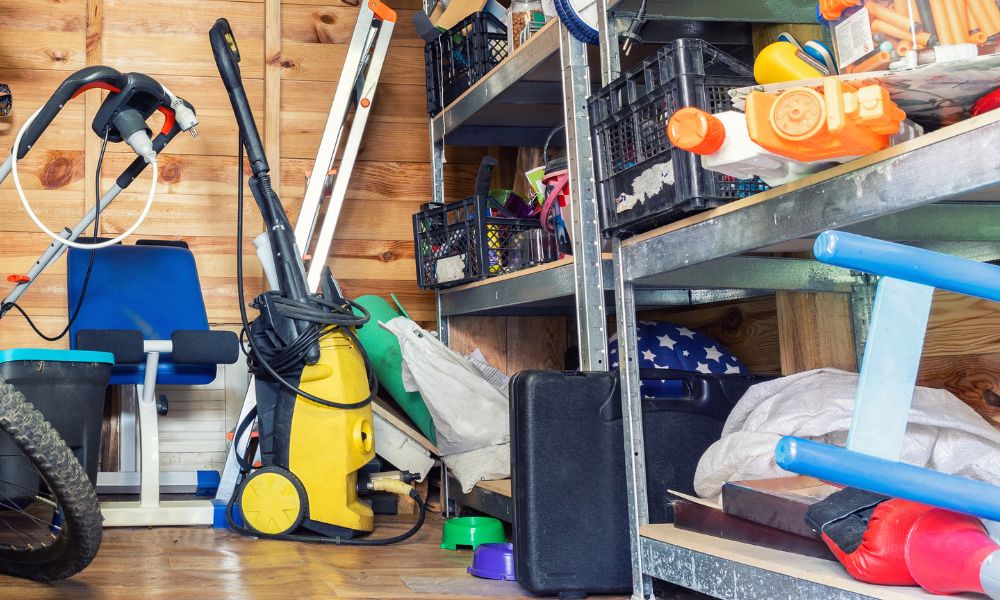
You’ve spent the year blasting away grime, cleaning decks, siding, and driveways—but as winter creeps in, your pressure washer needs some TLC too. If you live in a region where temperatures dip below freezing, properly storing your pressure washer for winter isn’t optional—it’s essential. 💥
Fail to do it right, and you risk cracked pumps, busted hoses, and engine damage that’ll cost you more than a few bucks come spring. 🧊💸
Let’s walk through how to winterize and store your pressure washer like a pro—whether it’s gas or electric.
🛠️ Why Winterizing Matters
Pressure washers have water running through their:
- Pump
- Hose
- Spray gun
- Nozzles
- Detergent tank (if applicable)
If any water is left inside when temperatures freeze, it can expand, crack components, and destroy seals or valves. You might not even know there’s damage until you try using it again months later. 😬
The good news? With a little prep, you can avoid costly repairs and extend your washer’s lifespan.
🧼 Step-by-Step: How to Store Your Pressure Washer for Winter
🔌 Step 1: Disconnect and Drain All Water
Turn off the water source and disconnect the garden hose, spray wand, and high-pressure hose.
✅ Then:
- Pull the trigger to release any remaining pressure
- Drain all water from the pump, gun, and hose
- Tilt the unit gently to remove trapped water
💡 Tip: Don’t forget to check attachments, like the soap injector or turbo nozzles—they can hold water too!
⚙️ Step 2: Add Pump Saver (for Gas or Electric Units)
Pump Saver is a foamy antifreeze-like product that:
- Lubricates seals
- Prevents corrosion
- Displaces moisture
- Keeps components from cracking ❄️
Insert the Pump Saver bottle into the water inlet and squeeze until it comes out the other end. You can find it at hardware stores or online.
🧴 Recommended brands: Briggs & Stratton Pump Saver, STA-BIL Pump Protector
⛽ Step 3: Prepare the Engine (Gas-Powered Only)
Gas-powered washers need a few extra steps to protect the engine over winter:
Option A: Drain the Fuel Tank
- Run the engine until it dies
- This removes gas from the carburetor
- Prevents gumming and hard starts in spring
Option B: Add Fuel Stabilizer
- Pour stabilizer into the gas tank
- Run the engine for 2–3 minutes
- This keeps fuel fresh for up to 6 months
⚠️ Never store a washer with untreated fuel in it—it’ll gum up the system and possibly ruin the carburetor.
Browse Amazon Here For Popular Pressure Washers And Accessories
🧽 Step 4: Clean the Exterior
Give the machine a wipe-down:
- Remove dirt and debris
- Clean air vents
- Check for oil leaks or wear
Clean the nozzle tips and store them in a dry case or bag. 🧼
🔌 Step 5: Store Indoors (If Possible)
Where you store your pressure washer matters just as much as how you prep it.
🏠 Best storage locations:
- Garage
- Basement
- Shed (if insulated)
❌ Avoid:
- Leaving it outside (even covered)
- Storing in an unheated area without winterization
Moisture, cold, and rodents are all enemies of idle power washers.
💡 Bonus Tips
- Keep hoses coiled loosely to prevent cracking
- Store vertically (if designed for it) to save space
- Don’t stack heavy items on top of your washer
- Label it “winterized” so you know it’s ready to go when spring returns 🌷
⚠️ What Happens If You Don’t Winterize?
Here’s what could go wrong if you skip this step:
- Pump damage from ice expansion 💥
- Rust and corrosion inside metal parts
- Fuel system issues in gas models
- Broken seals or gaskets from dry storage
- Costly repairs or full replacement come spring 😵
✅ Final Thoughts
Storing your pressure washer for winter is all about protection and preparation. A few simple steps now can save you hundreds of dollars and hours of frustration later.
To recap:
- ✅ Drain all water
- ✅ Add Pump Saver
- ✅ Stabilize fuel (or drain it)
- ✅ Clean and inspect your unit
- ✅ Store in a dry, safe place
Your pressure washer will thank you come spring—ready to fire up, spray clean, and get back to business. 🌞💦
Browse Amazon Here For Popular Pressure Washers And Accessories



